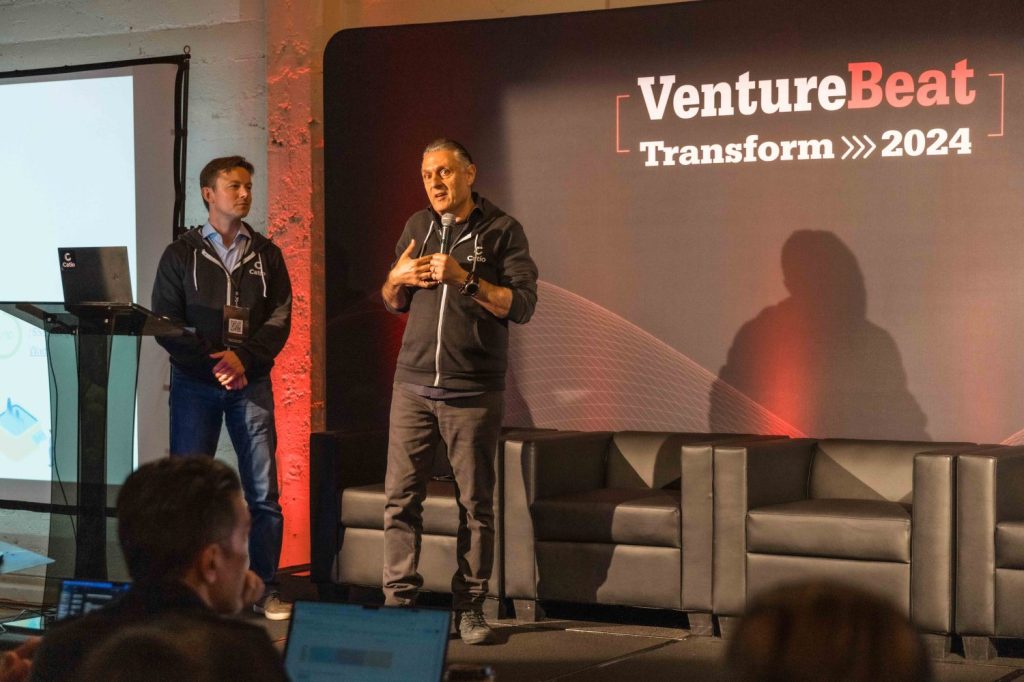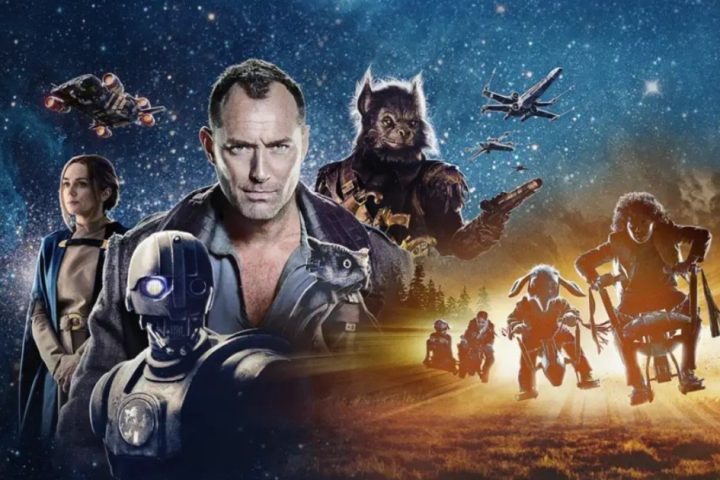Stay ahead of the curve with our daily and weekly newsletters, packed with the latest updates and exclusive insights on the AI industry. Discover More
For CTOs and chief architects, the tech stack has always been more of an art than a science, a domain of experience and tribal knowledge.
However, as enterprise architectures become increasingly intricate and obscure, a fresh approach is needed, says Toufic Boubez, co-founder and CTO of Catio. He believes that the process of building and managing infrastructure is evolving into a data-driven science.
With its sights set on leading this transformation, Catio, a one-year-old startup currently in closed beta, offers an AI copilot for tech stack architecture. Boubez and Co-Founder and CEO Boris Bogatin showcased their innovative platform at the Innovation Showcase at this year’s VB Transform in San Francisco.
Boubez envisions the company’s platform as “the next evolution of the stack.”
Creating a digital twin or blueprint of the enterprise tech stack
Catio’s platform acts as a digital twin, generating blueprint-like visualizations of an enterprise’s architecture. The system can design new tech stacks and continuously assess architecture to serve as an “ongoing AI advisor,” as Bogatin puts it.
This visualization offers strategic insight into subsystems incorporating thousands of points of context. AI sitting at the heart of the stack processes this data and presents it in a contextually relevant manner, Bogatin explains.
“Think of Catio as AI for the CTO,” he suggests.
The company is on the brink of commercial availability — expected this fall — and its eight-person team is collaborating with larger startups and Fortune 100s. It has secured $4 million in pre-seed funding and anticipates another round of fundraising before its commercial launch.
“We’re rigorously testing this with major design partners,” Bogatin adds.
Surpassing the limitations of whiteboards
Enterprise leaders need visibility into their systems to make strategic decisions and investments, Bogatin notes. But tech stacks are becoming increasingly complex as organizations incorporate more SaaS and cybersecurity apps and components.
Often, CTOs struggle to understand the purpose of their architecture and, crucially, why they need to invest significant funds into it, he observes. They view tech stacks as a cost center, unable to directly link investments to business outcomes.
“They don’t know how to measure it,” Bogatin states. “They’re all seeking help. Many people don’t want to be burdened with figuring out the best architecture.”
This is because traditionally, enterprises have relied on high-priced architects and costly consultancies to build their tech stacks, Bogatin points out. But often, these designs “live in people’s heads.”
“Human brains will synthesize that and put it on whiteboards; that was the most logical way to represent what was going on in their heads,” he says.
But this approach often results in tech architectures that are opaque, or black boxes. “It’s not been very data-defined, very accessible,” Bogatin observes.
Boubez notes that, if you had asked software developers three years ago whether they would use AI, they likely would have responded that software development is a skill that AI couldn’t handle. But now, everyone uses GitHub Copilot, Tabnine or other AI platforms.
“This is the same kind of approach and perspective,” he says of his company’s product.
Leveraging a sophisticated workflow of AI agents
Catio creates a “canonical view” of architecture requirements with dashboard-level analytics. A 24/7 AI advisor provides recommendations across the stack so that leaders know exactly what they’re dealing with (and what they need).
“It’s about identifying exactly what you have in your tech stack,” Bogatin explains. “You need to understand what you have, you need to be able to evaluate it, you need to have analytics.”
Catio’s platform is built on a multi-agent system, which Boubez describes as a “relatively complex, sophisticated workflow of AI agents that collaborate with each other to create design proposals.”
This system includes a chief architect agent who communicates with retrieval agents and agents specialized in areas such as data, messaging and security. The AI lower down in the stack performs analysis, makes recommendations — and provides reasoning for those suggestions — then crafts design proposals that are filtered back up to the chief AI architect. That agent then analyzes proposals based on business context, summarizes them and presents them to human users.
“This context-aware use of foundational models, and agentic use of foundation models is extremely powerful,” Bogatin asserts. “This is like using scalpels to go into a foundational model to retrieve things that are super, super precise as opposed to asking a prompt.”
Simplifying the lives of CTOs
Catio operates similarly to SaaS in that users integrate their tech stack components and create policies around them. The platform then forms a codebase that codifies the entire architecture. Users can see what changed from snapshot to snapshot and gain a true understanding of their architecture.
The view is “exactly the way it is at the point of production,” Bogatin explains, and users can see any information about any component, move, filter and rearrange them and analyze raw data to understand its parent and child relationships. They can also save various teams as views.
Boubez cites a use case of a chief architect of a large biotech company overseeing several architecture and project teams. They needed to have a view of each of those teams and get a handle on everything being built. Catio enabled the architect to communicate on a common platform with teams to assess and discuss different recommendations, make plans and improve architectures.
Jordan Rosen, ex-SVP and GM at Disney, explains that he ran the profit and loss (P&L) for the company’s over-the-top (OTT) video streaming platform used by HBO, WWE, Fox, Sony, Discovery, MLB, NHL and others
“As an organization, it was very challenging getting quantifiable visibility on cost performance of our cloud operation,” he says. He notes that if Catio can provide dashboard-level visibility and recommend paths to improvement, “it would be a go-to tool to track and jointly evaluate roadmaps and performance.”
Satish Raghunath, VP of engineering at Salesforce, points out that infrastructure engineers continually grapple with a complex set of issues.
“Some of the key pain points are in picking the appropriate software components and integrating them with the rest of the stack,” he says. He adds that it is “heartening” to see Catio tackle these problems. “It can make the CTO’s life a lot easier.”







